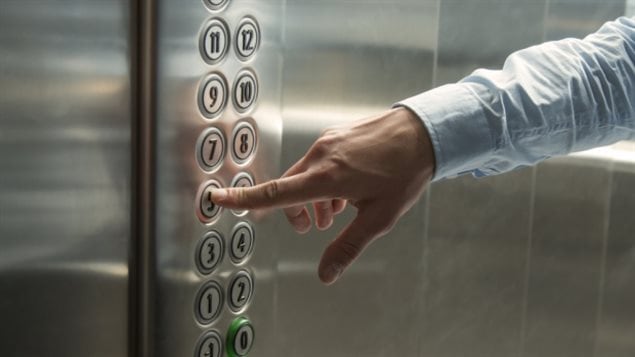Elevators, or the maintenance and repair of them, are becoming a major issue in Canada’s largest city. While the building boom in downtown Toronto, over the last 20 years, allowed a lot more people to enjoy the view from the upper floors of their condominium towers, the means to get there, the elevator, got a little negelected.
A confluence of circumstances have created some major problems. An increasing lack of reliability is leaving many people frustrated. According to a Canadian Press investigation, reporter Colin Perkel discovered that firefighters in Ontario responded to 4,461 emergency calls to free people trapped in elevators last year. That’s more than 12 such calls a day, and twice the number from 2001.
“If it’s not the number one complaint, it might be the number two complaint; waiting for an elevator!”
Rob Isabelle is a consulting engineer with KJA, a firm that specializes in elevators and escalators. He says that when it comes to living in a high rise building, “if it’s not the number one complaint, it might be the number two complaint; waiting for an elevator!”
“It’s not unheard of to have an elevator shut down for you know, five days or ten days for repairs.” He says, “10 of 15 years ago this was highly uncommon”.
ListenLike many other industries, the elevator industry has moved offshore, with most of the manufacturing taking place in China, where the main market is now. Isabelles says Otis, one of the major players, had a factory in Hamilton, and ThyssenKrupp is currently in the process of closing the facility they operated in Toronto.
According to Isabelle, globally, betweeen 500,000 and 600,000 elevators will be installed this year and more than half of those will be in China, so it makes sense to be close to the work. By comparison, in Canada, there will be between 2,000 and 3,000, elevators installed, and in the United States somewhere between 23,000 and 27,000. Japan and southeast Asia are also booming.
Elevator technicians are in short supply
North America also has the challenge of the aging elevator. Many in Toronto have been in operation for 50 and 60 years now and are in need of replacement. Isabelles says more prudent landlords will undertake the work. His company is overseeing 100 modernizations across Canada. KJA is involved in the upgrades which can cost $100,000 to $200,000 per elevator. Those landlords who don’t, or won’t make the changes, are left needing more repairs and maintenance.
Meanwhile, elevator technicians are in short supply. Like other occupations in the skilled labour pool, elevator technicians got overlooked. The apprenticeship takes five years; to go from a “helper” to “qualified helper” to a “90 per cent helper” takes many hours and classroom education and safety training are involved as well.
Rob Isabelle says no one envisioned this building boom continuing and creating the need for a growing workforce of elevator mechanics. And similar to the trends in skilled labour positions, there are more people retiring than those coming into the workforce to replace them.
“KJA tracks between three and 4,000 elevators in Canada on a monthly basis in terms of call backs and we’re definetly seeing some numbers, there’s a per centage of devices out there that are highly problematic.” says Isabelle.
He says there are a few solutions, chief among them is increasing the labour force. Having the colleges increase the graduating classes from 30 to 40, to 70 or 80 or even 100 students would address some of the issues. He say it is a trade that pays well with a technician earning at least $50 an hour, which in of Canada, can provide a great living.
Isabelle says landlords have to make the move and invest in new equipment and stop patching the old, involving frequent maintenance calls. And contractors have to be part of the solution as well, he says, by establishing internal metrics, such as stocking and carrying the necessary components, so two and three week waits for a shipment from China, will no longer be an excuse.
Isabelle says that safety is not an issue as the Technical Standards and Safety Authority (TSSA) carefully oversees elevator use. It’s reliability that is the challenge!







For reasons beyond our control, and for an undetermined period of time, our comment section is now closed. However, our social networks remain open to your contributions.